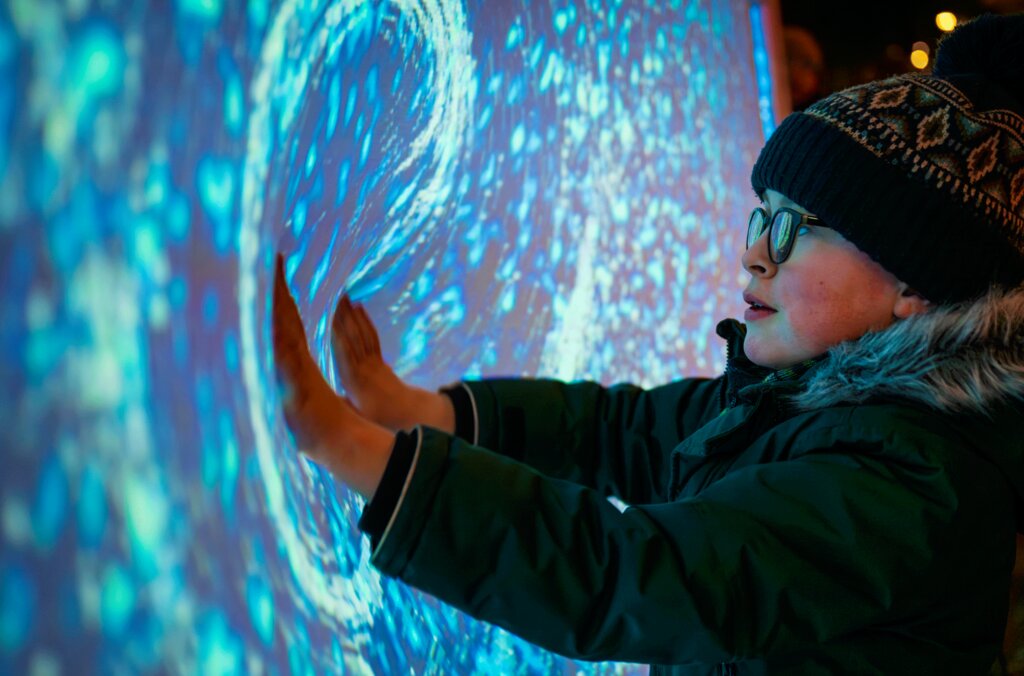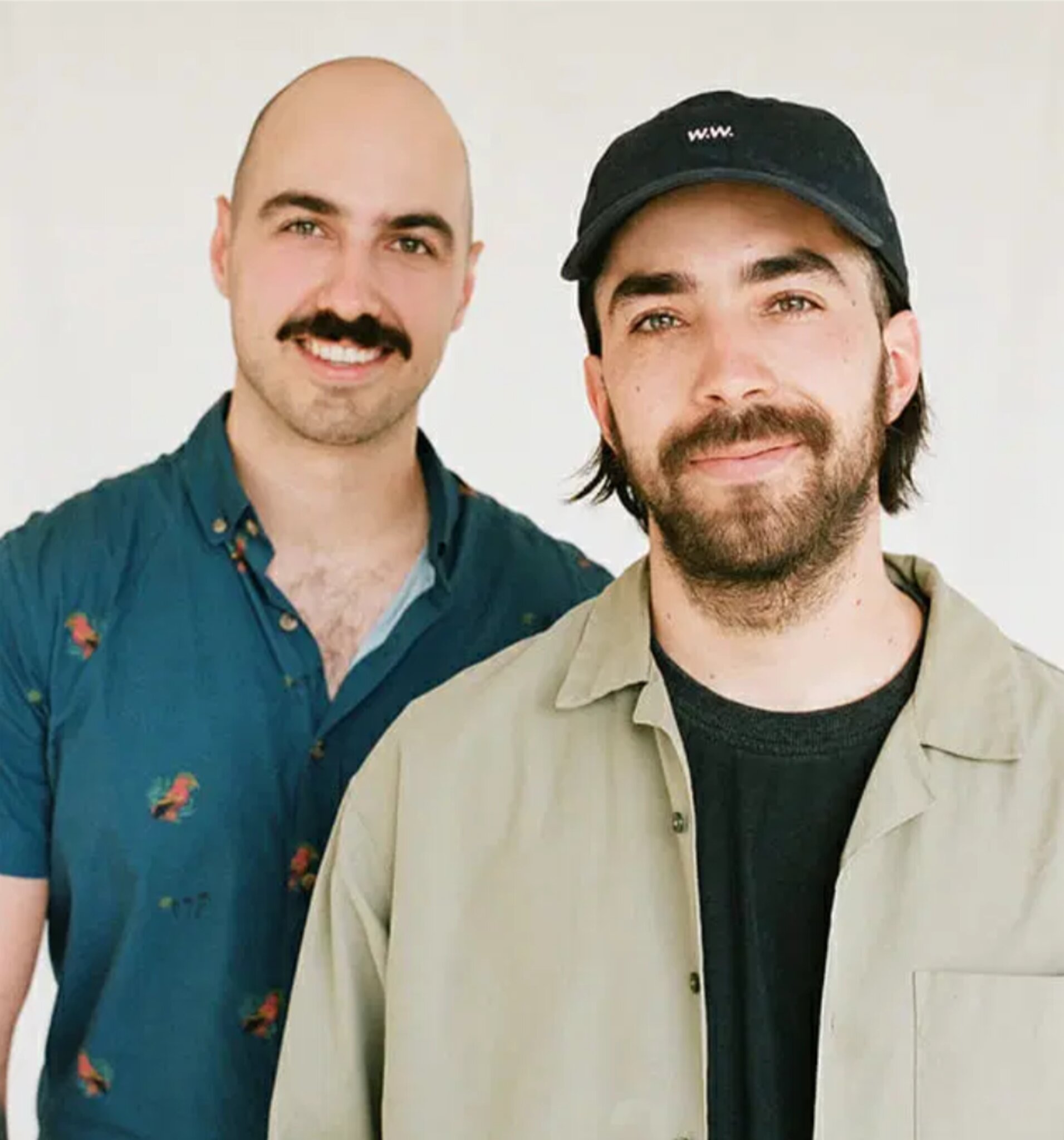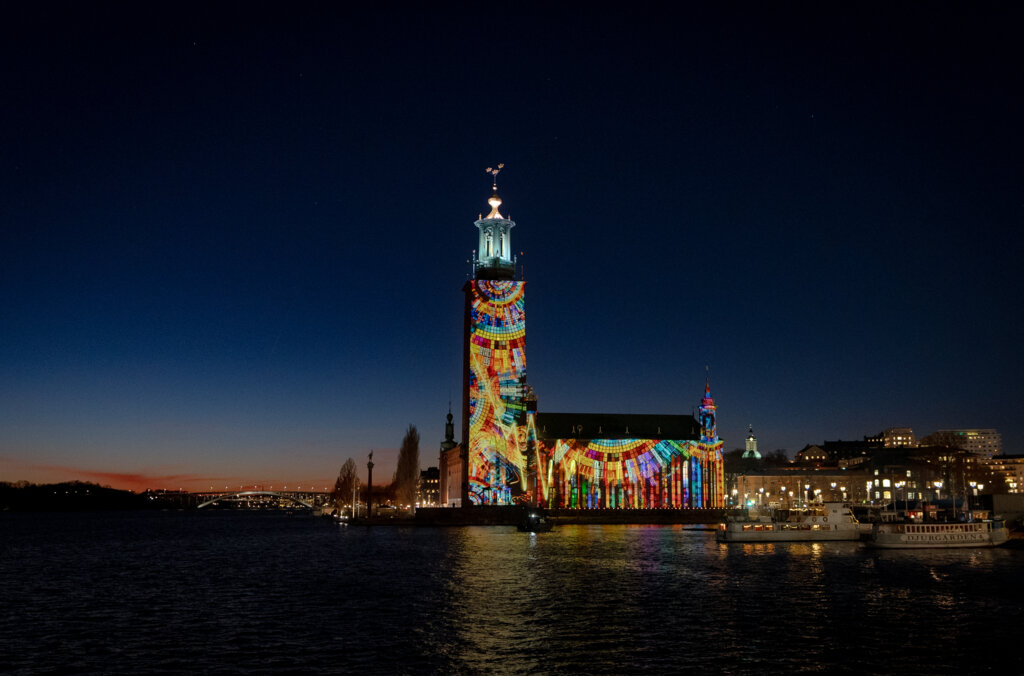
The artwork TETRA by the studio Ottomata draws inspiration from the 2017 Nobel Prize in Physics, awarded to Rainer Weiss, Barry C. Barish, and Kip S. Thorne “for decisive contributions to the LIGO detector and the observation of gravitational waves.” Through tactile interaction the audience can explore and be introduced to the scientific principles behind gravitational waves in an accessible, artistic form.
The piece consists of four retro-projected spandex screens which the audience is welcome to touch. Through the strength of the touch on the spandex screens, audiovisual content is generated, modulated and reformed by the interactors.
When interacting with the screens, the visuals are immediately modified, and a custom-built synthesizer is modulated in direct correlation to the current interactor’s movements. As the audience interacts with TETRA, the different physical forces will influence each other, as a reminder of the forces of the universe.

NOBEL WEEK LIGHTS
Ottomata

Ottomata is a Montreal-based experiential design studio creating interactive installations in public spaces without wearable technology.
Founded in 2017 by Hugo Laliberté and Jonathan Jeanson, the studio combines technical expertise with artistic vision to craft body-centered experiences. They have presented internationally – from Tokyo to Dubai, Paris, London, and New York.
Recognised with multiple awards, Ottomata pushes the boundaries of interaction while prioritising accessibility, collectivity, and artistic integrity.

Nobel Week Lights
Art lighting up Stockholm
Read about Nobel Week Lights, a free light festival taking place in Stockholm during the darkest time of the year.
NOBEL WEEK LIGHTS
6–14 December
Free admission
The festival is free to visit, and open to everyone
Opening hours
The artworks are open daily, between 16:00-22:00